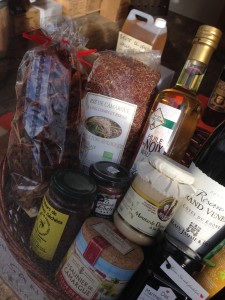With the floods in UK perhaps UK research institutes should turn their attention to rice as a crop. Need more rice experts! #UKrice
— GaryFoster (@Prof_GD_Foster) February 20, 2014
I suspect Prof. Foster was being facetious, and in any case would have to fight it out with other researchers working in a different direction, but maybe temperatures in England will soon be as suitable for rice cultivation as the rainfall regime. In Europe (and indeed Japan and New Zealand) the northern limit of rice cultivation seems to be at about 40-45 deg N, which covers the famous growing regions of the Po Valley in Italy and the Camargue in France. However, the very northernmost limit of rice cultivation in the world is at about 53 degrees N, which would put it at the latitude of Liverpool, say. So the south of England may not be entirely out of bounds in the future, if you factor in climate change and clever plant breeding.
Of course, as we read yesterday, temperature is not the only constraint to rice production in Europe. Spanish rice farmers are fighting an exotic snail, which may spread from the Ebro delta, which incidentally is on the 40th parallel N or thereabouts. Although rice has been in Spain since maybe the 8th century, its cultivation in the Ebro is relatively recent.
The first Designation of Origin for rice in Europe was granted to Calasparra rice which is grown in a mountainous area along the river Segura in the region of Murcia, the varieties being Bomba and Balilla X Solana. Both are sold as either brown or white rice. Bomba rice is the best-known of the Spanish varieties. Its grains are rounded but they increase lengthwise by almost fifty per cent during the cooking process and are very absorbent.
Also protected by a Designation of Origin is the rice grown traditionally in the Júcar river basin and in the Albufera, the most famous of the natural wetlands in Valencia where the varieties are Senia, Bahía and Bomba. The rice, mostly Bahía, grown in the Ebro delta in Tarragona (Catalonia) is also covered by a Protected Geographical Indication (PGI).
For the benefit of prospective English rice farmers, Bomba is available from the Spanish genebank, and elsewhere too. No word on whether there is material somewhere resistant to the ravages of Pomacea insularum.


